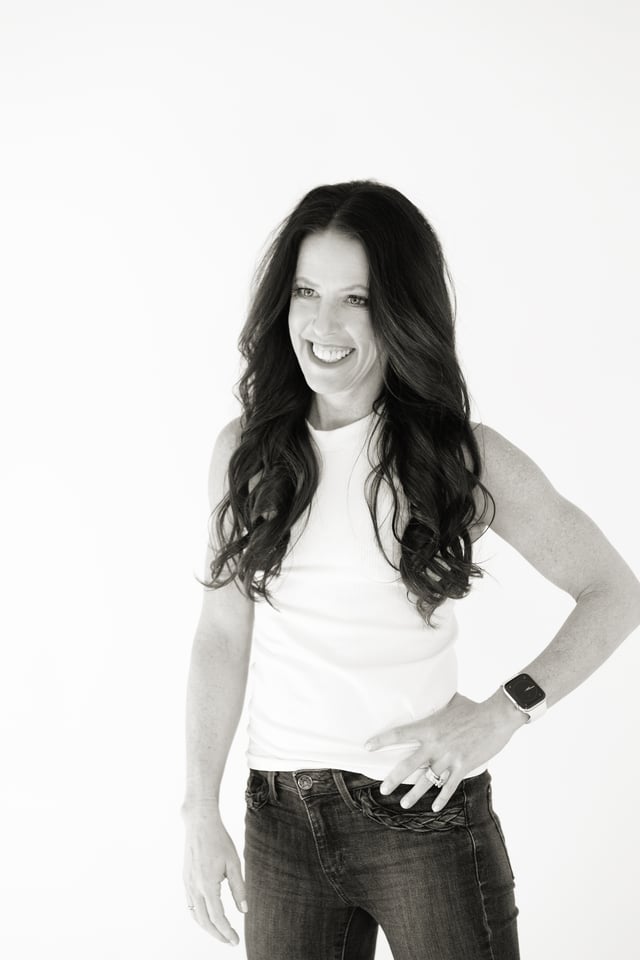Strategic Self-Promotion for Fitness Pros
Boost your business by keeping in touch with “could-be” clients in a targeted way.

Promoting yourself has never been easier. Free social media, affordable Web design and easily accessible graphic design provide ample opportunity to draw awareness to what you have to offer. But without a blueprint, you are wasting your time. Read on to uncover core self-promotion methods that can increase your business in less time than you think.
These strategies make up one small part of the infallible Book Yourself Solid® system, which I have used in my own business. The BYS system is based on one fundamental principle: Marketing doesn’t get you clients; it just gets you awareness. When people become “aware” of you, they check you out to see if you have a solid product or service. If all goes well, potential clients will offer you the chance to build trust and credibility. Self-promotion should focus on building value over time with anyone who has become aware of you and what you have to offer. Here’s how to do it.
The Keep In Touch Strategy
An automated Keep In Touch strategy is the cornerstone of self-promotion. (KIT is closely interconnected with other core self-promotion strategies of the BYS system. You’ll learn about three of them in this article.) The KIT approach helps you build your network and establish a base of enthusiastic fans who trust you and are interested in what you have to offer. The bigger your network, the more likely you are to be booked solid.
Many personal trainers and fitness entrepreneurs fail at business because they lack an automated KIT strategy. Trainers who don’t look for new clients until existing clients start to take their business elsewhere will find themselves in a reactive cycle that leaves income unreliable and confidence shaken. Taking time to set up a KIT strategy that works will save you time, money and heartache in the long run!
Choose a Database Program
First, you’ll need to invest in a Customer Relationship Management system. No, your address book is not a CRM! An address book can help you keep track of people’s names and email addresses, but a good CRM will help you track your relationships with people (e.g., where a lead came from, any contact you’ve made, the lead’s response). Good examples of CRMs are Infusionsoft®, GoldMine® and Act! (this list is not all-inclusive). With research, you can find a system that meets your needs, your budget and the size of your contact list.
Use Your CRM
Begin by entering the data. Then, make sure you continue to connect with the leads, consistently, to build trust and credibility over time. The quality of your relationships (not the number of people on your list) will directly impact your financial health!
Communication with your leads might be direct (one-on-one), but you will also need to stay in touch with your entire list. Consider the following options:
- mailed newsletters or direct mail (effective, but time-consuming and costly)
- email newsletters (easiest and most cost-effective)
Hint: Try the IDEA Client Newsletter, which makes creating and managing e-newsletters simple for any fitness professional. IDEA’s award-winning editorial team provides the educational content, which includes articles written for the fitness consumer, a healthy recipe and an instructional exercise video. Best of all, the newsletter goes out automatically to your custom database on the first day of each month—with your private label on it. - social media (free and wide-reaching)
Note: Consider using IDEA FitPost to keep in touch with clients with curated social media content from the most reliable sources, which you can post to your Facebook page automatically. It’s a clean and easy solution that keeps you focused on what you do best instead of spending hours on social media. - phone calls (this does not include cold calling; make your calls only after at least one positive interaction)
The goal is to add value to a potential client’s life. Ensure that you have a meaningful connection with each person on your list and that you have permission to communicate. Then, implement the
80–20 Rule
80% of content should be free and helpful to your target audience (that is, it should be about them). The remaining 20% is your chance to share more information about you and your services.
Networking
Three core self-promotion strategies (networking, direct outreach and referrals) work closely with the KIT system, and they will help you collect interested clients and connect to make the sale.
Networking can take place at formal events, but it can also be an informal chat at the coffee shop, at a school function or in line at the store. You’re always networking! It should not be about schmoozing—or even about telling your own story. It’s about learning the stories of other people, to begin to find ways you can serve them.
Follow the 50-50 rule. Half of your networking should focus on potential clients, while the second half should be with other professionals. When you connect with other professionals, you can share resources, ideas and information. Remember to track interactions in your CRM, and be specific. That way, future interactions can build on previous ones as your relationships with potential clients and pros grow.
Direct Outreach
Your next strategy is direct outreach. Successful fitness professionals do not wait for opportunities to come; they make the opportunities happen. Create a plan to proactively reach out to leads, partners and other colleagues to bring business opportunities to fruition.
Direct outreach is not the same as spam. Reach out only to people who have given you permission to do so. This includes sending emails, making phone calls and contacting via social media. If you are providing value, with no expectations, or if you’re giving a compliment in an effort to strike up a relationship that could be beneficial in the future, then reach out.
Keep the following acronym in mind: VITL. Your direct outreach should be valuable, individualized, targeted and legitimate.
For everyone you contact, find out what motivates the person; his or her accomplishments, common interests, and peers (do you have friends or acquaintances in common?); the unique value you can bring to that person’s life; the role you currently play in it; and more. Yes, this takes time, but anything less will feel “salesy” and will not build connections.
Consider creating a list of 20 people who could positively impact your business. Include influencers in your area, potential clients, key decision-makers, members of the press and local “personalities.” Creating relationships with these people will bring referrals, awareness and business. Continue to seek opportunities to make connections with everyone on the list. You’ll want to connect with someone on the list every day! Start with the first person; track the communication and set a reminder to reach out again in 20 days (once you’ve made it through the list). Be patient and persistent; this is one of the tougher strategies, but it will pay off!
Referrals
You are probably bringing in clients through indirect referrals right now. If you set a system in place for referrals, you will have more clients than you can handle. As a bonus, they will most likely be more loyal and provide more referrals down the line!
Consider What You’ve Been Going
To begin, look at what you’ve done in the past. Identify where you have received referrals, what each referral was for, whether the referral needed you right away, how you were contacted, whether the referrer was educated about your referral process, how you followed up and if the referral is a client today. When you review your history, you’ll identify your strengths as well as the areas that need improvement.
Log Your Referral Opportunities
You don’t have to start asking yet, but begin to notice the chances you have to execute your plan. Each day, write down the opportunities you had to seek referrals from clients and colleagues.
Start Asking for Referrals
Consider the natural opportunities: at the end of a great session, when clients are purchasing more sessions or when clients mention friends who are struggling with their fitness goals. You can also create opportunities for a referral conversation: Congratulate clients on achieving a small goal, discuss how accountability partners can help them on their fitness journey or ask clients how they are feeling about the work you’re doing together. As they begin discussing the value they are receiving, make a natural progression to discussing referrals as a way of passing on the “gift” to someone they love and respect.
Contact Referrals
Once you have a referral, get in touch right away. Provide your clients with clear directions about initiating contact. For example, ask them to email their referrals and cc you. Or suggest that you make the initial contacts and cc your clients. In your first connection, be sure to add value. Ask your clients a bit more about what the potential clients are struggling with or what they want to learn more about. Then, get to work via the strategies we’ve already discussed. Once you make contact with the referrals, circle back to the referrers to share how it went and to say thank you.
Work With Other Professionals
Consider creating referral relationships with complementary professionals. Nutritionists, health coaches and massage therapists make great referring partners, as your services go hand in hand. You can also create an affiliate structure (paying a fee to anyone who refers) or a rewards program (giving a gift in exchange for a referral).
Targeted Self-Promotion
Simply shouting your name from the rooftop and screaming, “Look at me, look at me” will get you noticed, but it won’t book business. To be strategic with your self-promotion, you must develop an automated KIT strategy and consistently deploy the three key strategies (networking, direct outreach and referrals). However, first make sure that you have clearly identified whom you serve and what you do.
Please note that the BYS system includes three nonmandatory strategies: speaking, writing and Web. All strategies presented in this article work best as a part of the Book Yourself Solid® system. For maximum benefit, read the entire Book Yourself Solid® book by Michael Port (Wiley 2010) and complete the assignments.
For successful networking:
Share who you know. Look for opportunities to make connections among people you know—even those you’ve just met. Aim to make at least two introductions each day with no expectations. For example, if you meet someone new in town who enjoys hiking and you know someone else who does a group hike every Saturday, an introduction would be perfect! You may not directly receive anything for the connection, but you’ll be relevant to both parties, and because of this positive interaction you’ll have something meaningful to follow up on at a later date (KIT).
Share what you know. Read books, save links and PDFs of great articles, bookmark websites and acquire resources. Then, when the information is relevant to someone you meet, share it. For example, reach out to the potential client you see on Facebook who is asking for advice on flexibility for cyclists. Send a message, and attach an article or a link to your favorite YouTube channel or your personal suggestions. No need to solicit at this point; simply add value. This begins the process of building trust and credibility,which you can capitalize on in the future.
Share how you feel. Be in the moment, and listen intently. Find opportunities to genuinely express compassion for events in people’s lives. Examples include a well-thought-out “happy birthday” note (instead of a Facebook wall post), a handwritten note after a special event ora quick text message of encouragement before a big meeting.
Shannon Fable
Shannon Fable is a sought-after speaker, author and thought leader in the area of fitness business development and strategic innovation. She has spent more than two decades helping impressive brands such as Anytime Fitness, ACE, FIT4MOM® and BOSU® with business and program development. Fable served as chair of the ACE Board of Directors and is the co-founder of GroupEx PRO®, a cloud-based group fitness management tool that she successfully sold to Daxko in 2019. As a certified Book Yourself Solid® business coach, she helps fitness professionals navigate the industry to build scalable and sustainable careers.





